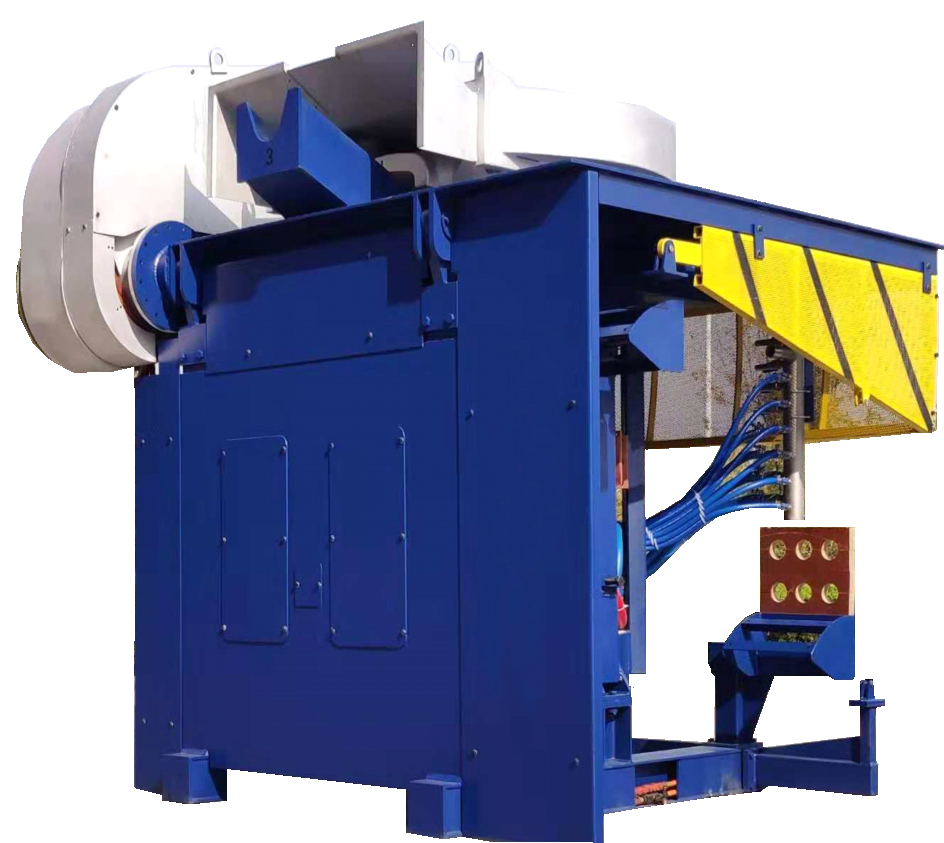
洛阳松导感应加热科技有限公司
联系方式:15038554363
24小时技术热线:15038554363
邮 箱:1390003299@qq.com
厂址:河南省洛阳市洛新工业园区
感应加热炉淬火对钢有哪些要求?
对感应加热炉淬火用钢一般有以下要求∶
-
钢的碳含量由零件的工作条件确定,可由w(C)为 0.15%~1.2%,这是最基本的要求。
-
钢应具有奥氏体晶粒不易长大的倾向,选用本质细晶粒钢。
-
钢应尽可能具有细的、分散的原始组织。以上,2)、3)两项条件使钢在加热时可获得奥氏体细晶粒和较高的晶粒长大温度,这在感应加热时特别重要,因为感应加热比炉内加热温度高,更难于准确地控制温度规范。目前,一般感应加热炉淬火用钢,晶粒度控制在 5 ~8 级。
感应加热炉淬火对钢的预备热处理有要求,同一钢材,预备热处理为调质时,由于索氏体是很细的组织,奥氏体转变均匀化最快,所需加热温度最低,得到的硬度最高,可以获得最浅的淬硬层深度。当预备热处理为正火时,细片状珠光体转变为奥氏体需要较高的温度;当原始组织为粗片状珠光体及大块铁素体时 (亚共析钢退火状态),则需要更高的加热温度。即便如此,由于加热时间短,淬火组织中仍会有未溶解的铁素体存在。感应加热炉淬火时,钢材的淬透性仍然起着作用,同样加热层深时,组织越细,淬透性越差,钢中含的合金元素,如 Mn (锰)、Cr(铬)、Ni(镍)、Mo (钼)等对钢的淬透性有一定影响。
-
精选碳含量,对一些重要零件如曲轴、凸轮轴等,在选择钢号时,常提出精选碳含量的附加要求,精选碳含量将优质碳钢碳含量的上、下限差从 0.08%(如 0.42% ~0.50%)缩小为 0.05%范围(如 0.42%~0.47%),这样可以减少由于碳含量波动对产生裂纹或层深变化的影响。笔者曾分析过几种不同货源的 45 钢,用于曲轴颈感应加热炉淬火,发现在相同工艺规范情况下,层深有很大差异,其原因与材料的 Mn 及杂质中 Cr、Ni 含量有关。此外,国外钢材的杂质元素中,Cr、Ni 含量常较国产钢材为高,因此,淬火结果常有差异,此点必须注意。
-
冷拔钢的脱碳层深度要求。冷拔钢用于感应加热炉淬火时,对表面总脱碳层深度有要求,一般规定每边的总脱碳层深度应小于 1% 棒料直径或钢板厚度。贫碳层淬火后硬度很低,因此冷拔钢必须磨去贫碳层后再检验淬火硬度。
What are the requirements for steel in induction heating furnace quenching?
The steel for quenching in induction heating furnace generally has the following requirements:
1) The carbon content of steel is determined by the working conditions of the parts, and w(C) can be 0.15% to 1.2%, which is the most basic requirement.
2) The steel should have the tendency of austenite grains not easy to grow, and the intrinsically fine-grained steel should be selected.
3) The steel should have as fine and scattered primitive structure as possible. The above, 2) and 3) two conditions enable the steel to obtain fine austenite grains and a higher grain growth temperature during heating. This is particularly important during induction heating, because induction heating is higher than the heating temperature in the furnace. , It is more difficult to accurately control the temperature specification. At present, the general induction heating furnace quenching steel, the grain size is controlled at 5 to 8.
Induction heating furnace quenching has requirements for the preliminary heat treatment of steel. When the preliminary heat treatment is quenched and tempered for the same steel material, since sorbite is a very fine structure, the austenite transformation is the fastest, and the required heating temperature is the lowest, resulting in the hardness obtained The highest, the shallowest depth of hardened layer can be obtained. When the preliminary heat treatment is normalizing, the transformation of fine flake pearlite into austenite requires a higher temperature; when the original structure is coarse flake pearlite and bulk ferrite (hypoeutectoid steel annealing state), then A higher heating temperature is required. Even so, due to the short heating time, there will still be undissolved ferrite in the quenched structure. When quenching in an induction heating furnace, the hardenability of the steel still plays a role. Similarly, when the heating layer is deep, the finer the structure, the worse the hardenability, and the alloying elements contained in the steel, such as Mn (manganese), Cr (chromium), Ni (nickel), Mo (molybdenum), etc. have a certain influence on the hardenability of steel.
4) Selected carbon content. For some important parts such as crankshafts, camshafts, etc., when selecting steel grades, additional requirements for selected carbon content are often put forward. 0.08% (such as 0.42% to 0.50%) is reduced to the 0.05% range (such as 0.42% to 0.47%), which can reduce the impact of carbon content fluctuations on cracks or layer depth changes. The author has analyzed 45 steel from several different sources for quenching in the crankshaft neck induction heating furnace, and found that under the same process specification, the layer depth is very different. The reason is related to the Mn of the material and the content of Cr and Ni in the impurities. . In addition, among the impurity elements of foreign steel, the content of Cr and Ni is often higher than that of domestic steel. Therefore, the quenching results are often different. This point must be paid attention to.
5) Decarburization depth requirements of cold drawn steel. When cold drawn steel is used for quenching in an induction heating furnace, there are requirements for the total decarburization depth on the surface. Generally, the total decarburization depth on each side should be less than 1% of the diameter of the bar or the thickness of the steel plate. The hardness of the lean carbon layer is very low after quenching, so cold drawn steel must be ground to remove the lean carbon layer before checking the quenching hardness.
手 机:15038554363



















